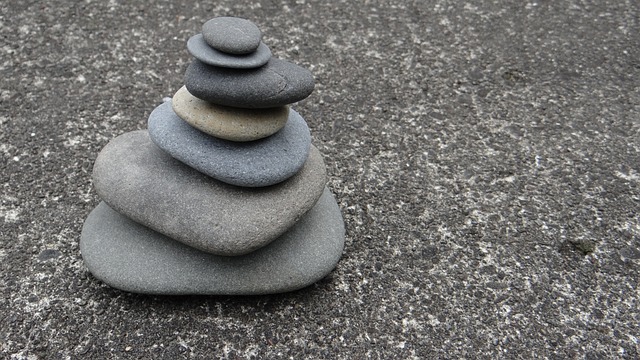The discussion delves into the environmental impact of traditional cremation practices and introduces sustainable alternatives like alkaline hydrocremation (aquamation) and bio-cremation as eco-friendly options. These methods reduce greenhouse gas emissions by using water, alkali solutions, or enzymatic reactions to decompose human remains without the high heat of conventional cremation. Aquamation specifically preserves bones, which can be turned into biodegradable urns or returned to nature. Both aquamation and bio-cremation offer environmentally conscious choices that align with the growing trend of sustainable end-of-life practices. They provide dignified options for those who wish to minimize their carbon footprint, reflecting a commitment to environmental stewardship within the cremation services industry. The article also compares these methods in terms of cost and personalization, emphasizing that individuals can now choose from a variety of cremation services that cater to both ecological considerations and individual preferences, ensuring a respectful and meaningful farewell while considering financial constraints and values.
With increasing environmental awareness, individuals are exploring greener alternatives to traditional cremation practices. This article delves into eco-conscious methods of post-life care, highlighting the rise of bio-cremation, aquamation, and green burial practices as sustainable options. Each method is examined for its environmental impact, cost considerations, and the benefits they offer in comparison to conventional cremation services. Join us as we navigate this new terrain in the memorialization landscape, providing valuable insights into how each option honors life while respecting the environment.
- Exploring Eco-Friendly Cremation Alternatives
- The Rise of Bio-Cremation and Its Environmental Impact
- Aquamation: A Gentler Approach to Post-Life Care
- Green Burial Practices as a Sustainable Cremation Alternative
- Memorializing Life Without Traditional Cremation Services
- Understanding the Costs and Benefits of Each Cremation Alternative
Exploring Eco-Friendly Cremation Alternatives

In recent years, concerns about environmental impact have led to a growing interest in eco-friendly alternatives to traditional cremation services. These sustainable options cater to individuals seeking to minimize their carbon footprint even after life. One such alternative is alkaline hydrocremation, also known as aquamation, which uses water and an alkali solution to break down the body’s tissues without high temperatures. This process significantly reduces emissions of greenhouse gases and pollutants typically associated with conventional cremation. Moreover, the remains resulting from aquamation are just as adaptable for memorialization, such as being turned into biodegradable urns or returned to nature. Another eco-conscious choice is bio-cremation, which employs a chemical process to decompose the body through enzymatic reactions. This method not only uses less energy but also provides a natural return to the earth, as the process yields organic remnants that can be composted. These eco-friendly cremation alternatives offer a meaningful and sustainable way to honor life while respecting the environment, reflecting a commitment to preserving our planet for future generations.
The Rise of Bio-Cremation and Its Environmental Impact

The landscape of end-of-life rituals is evolving with the advent of bio-cremation, a process that offers an eco-friendly alternative to traditional cremation services. This innovative method, also known as alkaline hydrolysis, involves placing the body in an environmentally friendly solution where high pressure and temperature accelerate the natural decomposition process. Unlike conventional cremation, bio-cremation consumes less energy, emits fewer greenhouse gases, and significantly reduces pollution typically associated with traditional crematorium practices. As environmental consciousness grows, the significance of this sustainable option becomes increasingly apparent, offering a way to honor the deceased while also mitigating the ecological footprint of cremation services. The environmental impact of bio-cremation is notable; it eliminates the emissions from combustion that traditional cremation produces, and the inert remains left after the process are less harmful to the environment compared to the ashes resulting from standard cremation processes. This shift towards more sustainable practices in cremation services reflects a broader trend of integrating environmental considerations into all aspects of modern life, including those at the end of it.
Aquamation: A Gentler Approach to Post-Life Care

Aquamation, often referred to as alkaline hydrolysis, emerges as a progressive alternative to traditional cremation services, offering a more environmentally sustainable and gentle option for post-life care. This innovative process involves placing the deceased in an aqueous solution under high pressure and temperature conditions of an alkali substance, typically lye, which accelerates the natural decomposition process. Unlike traditional cremation, which uses intense heat to reduce the body to its basic elements, aquamation results in the dissolution of bodily tissues, leaving bones, which can be processed into bone ash. This method is not only kinder to the environment—reducing carbon emissions typically associated with cremation services—but also to the families who seek a respectful and dignified way to say their final goodbyes. Aquamation aligns with the growing trend towards eco-friendly and compassionate end-of-life options, providing a choice that honors both the deceased and the living by minimizing its ecological footprint.
Green Burial Practices as a Sustainable Cremation Alternative

Memorializing Life Without Traditional Cremation Services

In recent years, individuals are increasingly exploring alternatives to traditional cremation services as a way to memorialise life in a manner that aligns more closely with their personal beliefs and preferences. These options provide a means for families and loved ones to celebrate the life of their deceased in unique and meaningful ways. For instance, bio-cremation, also known as alkaline hydrolysis, is an eco-friendly alternative that uses water and lye to accelerate natural decomposition processes. It offers a less energy-intensive option compared to traditional cremation and reduces environmental impact by handling remains in a way that avoids the emission of greenhouse gases. Another emerging trend is promession, or liquid cremation, which involves subjecting the body to a mixture of water and a biodegradable alkali solution under high pressure. This process results in the immediate reduction of the body’s size, allowing for a dispersal of the remains in a chosen natural setting, such as a forest or body of water, providing a serene and personal way to remember the deceased. These innovative methods not only offer environmental benefits but also create opportunities for ceremonies that can be as individual as the lives being honored, allowing for a truly personal farewell without adhering strictly to traditional cremation practices.
Understanding the Costs and Benefits of Each Cremation Alternative

When considering alternatives to traditional cremation, individuals and families often explore a range of options that can vary widely in terms of costs and benefits. Alkaline hydrocremation, also known as aquamation, is an eco-friendly alternative that uses water and lye at a higher pH level than traditional cremation. This process reduces emissions and potential environmental contamination, offering a greener option for those who prioritize sustainability. The cost of alkaline hydrocremation can be comparable to or slightly more expensive than conventional cremation, depending on the provider and location. Another alternative is flame cremation with direct cremation services, which involves a basic process without a traditional funeral or memorial service. This option is typically less costly as it foregoes embalming, elaborate ceremonies, and large funeral homes in favor of a straightforward cremation and return of the remains to the family.
On the other hand, flame cremation can also be offered with more comprehensive services that include memorialization options such as private ceremonies or the placement of ashes in a columbarium. The costs for these additional services will vary and can significantly impact the overall price. Additionally, there are bio-cremation methods, which involve the use of liquid substances under high pressure to break down biological tissues. This method is relatively new and may be more expensive than traditional cremation due to its innovative nature and specialized equipment requirements. Each alternative offers different benefits, from environmental considerations to personal preferences regarding remembrance and ceremony. When evaluating these options, it’s important to understand the costs associated with each and how they align with both your financial constraints and your values. Consulting with reputable cremation service providers will help you make an informed decision that honors the deceased in a manner that is meaningful and fitting for their legacy.
In recent years, the conversation around end-of-life options has evolved significantly, with traditional cremation giving way to a spectrum of environmentally conscious and compassionate alternatives. This article has highlighted various eco-friendly cremation methods, including bio-cremation, aquamation, and green burial practices, each offering unique benefits while minimizing environmental impact. As society becomes more aware of the ecological footprint of conventional cremation services, these innovative approaches are poised to become more prevalent, providing individuals with meaningful options that align with their values. It is clear that the future of post-life care is evolving towards sustainable practices that honor both the deceased and the planet. When considering cremation, it’s crucial to weigh the environmental, financial, and emotional aspects of each method to make an informed decision that resonates with one’s beliefs and circumstances.
